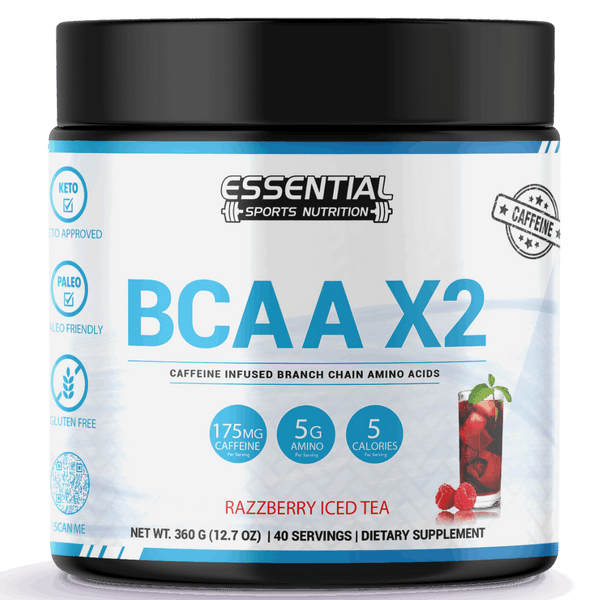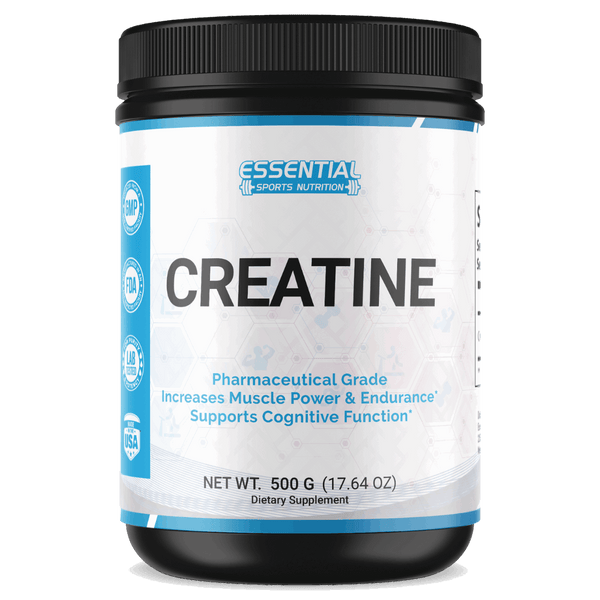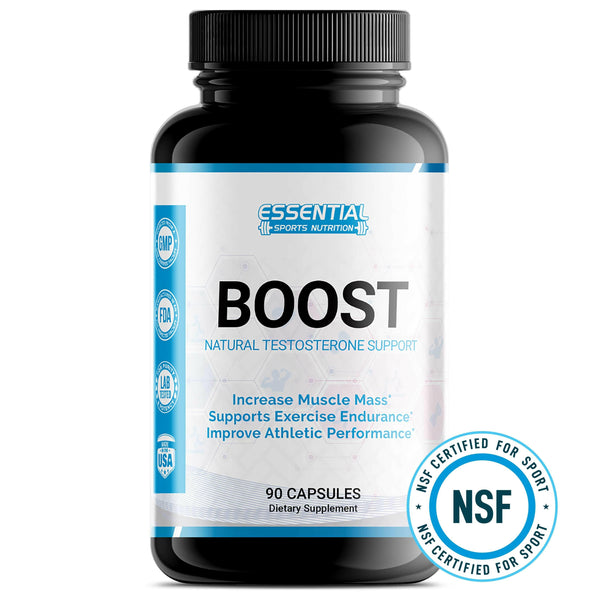Back Extensions: Proper Form, Benefits and Variations for Glutes and Hamstrings
Back extensions are key for making your lower back, glutes, and hamstrings strong. Doing them right brings many benefits. You can also tweak them to fit your fitness journey.
To nail back extensions, set up the machine right for you. Lie down right, and use your lower back muscles to lift up. This move is great for your spine muscles, boosting their power and bendiness, and for better control of your spine.
Bringing back extensions into your workout gives a nice twist to usual spine exercises. They make your back stronger and more limber.

Key Takeaways:
-
Back extensions strengthen the lower back, glutes, and hamstrings.
-
The proper form involves adjusting the machine, positioning yourself correctly, and engaging the lower back muscles.
-
Variations of back extensions target different muscles and increase the exercise's difficulty.
-
Alternative exercises can also strengthen the back muscles.
-
Back extensions primarily target the erector spinae, but they also engage other supporting muscles.
Let's dive into the different ways to do back extensions. They can make your workout routine fit you perfectly.
Variations of the Back Extension Exercise
The back extension exercise is great for building a strong back. It can be changed up to work different muscles. Adding new twists keeps your routine exciting and hard. Let's look at some fun ways to mix it up:
1. Equipment Variations
Try doing back extensions with different tools. Use a machine, a stability ball, or a bench. You get to work your muscles from new angles. This mix helps target your back in unique ways.
2. Arm Position Variations
Switching up where you put your arms changes the exercise. Cross them over your chest, or put your hands behind your head. You could also reach out in front of you. These changes work out various muscles, like your upper back or shoulders.
3. Resistance Variations
Make back extensions harder by adding weight. Hold a weight plate or dumbbell, or use resistance bands. This extra load works your muscles more. It helps you get stronger and build endurance.
4. Tempo Variations
Change how fast or slow you do your back extensions. Go slow and control each movement, or speed it up. This can make the exercise feel completely different. And, it helps you build your muscles in new ways.
Pick the variations that fit your workout level and goals. These changes make your back extension workouts more fun and challenging. You keep getting better and feeling the benefits of this great exercise.
Alternatives to Back Extensions
Looking for different ways to make your back muscles stronger? There are many effective exercises that could be what you need. Adding new exercises keeps your workout fun and works various muscles. This helps with overall strength and being more flexible. Here are some good choices to help build a stronger back:
-
Good Mornings: This move targets your lower back, hamstrings, and glutes. You begin with a barbell on your back. Then, hinge at the hips and lower your torso until it's parallel to the floor. Get back to the starting point by pushing your hips forward.
-
Barbell Deadlifts: Deadlifts work on many muscle groups, including your back, glutes, hamstrings, and core. Done correctly, this exercise makes your back muscles much stronger.
-
Trap Bar Deadlifts: These are like barbell deadlifts but work the same muscles slightly differently. The trap bar changes your grip and body position. This is good for those who find traditional deadlifts tough.
-
Romanian Deadlifts: They focus on the back of your body, like your hamstrings and glutes. Keep a small bend in your knees, hinge at the hips, keep your back straight, and lower the barbell. Do this until you feel your hamstrings stretch.
-
Kettlebell Swings: Kettlebell swings are a powerful exercise for your back muscles. Begin in a hinge position with the kettlebell between your legs. Then, swing it forward with force, using your hips and glutes.
-
Floor Back Extensions: These are similar to back extensions but need no special gear. Just lie down on the floor, put your hands behind your head, and lift your upper body by using your back muscles.
Adding these exercises to your routine will make your back stronger and more flexible. It also makes your training more interesting.
Muscles Worked in Back Extensions
Back extensions mainly work on the erector spinae. These muscles run along your spine. They help you keep a straight posture. Doing back extensions makes these muscles stronger. It also makes your spine more stable and improves your posture.
Back extensions also work on other muscles, like:
-
Glutes: The gluteal muscles work during hip extension in back extensions. This makes the glutes stronger and more toned.
-
Hamstrings: These muscles are on the back of your thigh. They get stronger during back extensions. This makes your legs more stable and boosts lower body strength.
-
Shoulders: Your shoulders have to stay stable during back extensions. This makes them stronger and more stable.
-
Core Muscles: The core is crucial for spine stability during back extensions. Working them makes your core stronger and your spine more stable.
Back extensions also slightly work the neck, biceps, triceps, delts, traps, and pecs. This exercise targets many body areas, making it very effective.
Benefits of Back Extension Exercises
Back extension exercises are great for your strength and health. They can make your posture better and cut down on back pain. They also make your posterior chain stronger. This means a better core and hips. These exercises focus on your lower back, butt, and hamstrings. This builds a solid base for a strong back and better physical activity.
Reducing Back Pain
Back extensions can really help with back pain. They make your lower back muscles stronger. This leads to better spine alignment and stability. It's great for people with ongoing back pain. It also helps to prevent future pain or injuries.
Strengthening the Posterior Chain
These exercises work on your posterior chain, like your lower back, butt, and hamstrings. This makes your lower body stronger and more powerful. It's especially good for sports that need quick movements. For example, sprinting, jumping, or lifting weights.
Improving Hip Extension
Good hip extension is vital for movements like walking, running, and squatting. Back extension exercises help with this by focusing on the butt muscles. This makes your hips move better. It improves your sports performance and lowers injury risk.
Enhancing Core Strength
Back extensions work your core muscles too. These include your abs and sides. Doing these exercises makes your core stronger. This means better balance, stability, and strength for everyday activities.
Improving Posture
Weak back and core muscles can lead to bad posture. Back extensions help by strengthening these muscles. This results in better spine alignment. Adding these exercises to your routine can boost your posture. It also lowers the risk of posture-related problems.
Building a Stronger Back
Back extension exercises are perfect for strengthening your back muscles. Regularly doing these can give you a stronger back. This back can handle daily tasks, sports, and other physical activities better.
Getting into back extension exercises can boost your fitness. It lessens back pain and injury chances. Plus, it boosts your performance in a lot of physical activities. Always focus on doing these exercises right. If you're unsure, ask a fitness pro for advice.
Proper Form and Technique for Back Extensions
Performing back extensions properly is key to their effectiveness and safety. Follow the right technique to target the correct muscles and avoid injury. Here are some tips for correct back extensions:
Adjust the Machine
Adjust the back extension machine to fit your body before you start. Make sure the footplate and hip pad are in the right spots. This ensures you move well and stay stable.
Position Your Body Correctly
Place your feet shoulder-width apart on the machine. Bend at the waist and align your hips with the pad. Your body should be relaxed and straight.
Engage the Core and Glutes
It's important to engage your core and glutes. This protects your lower back. Contract your abs and glutes before lifting to stabilize your spine.
Maintain Control
Focus on control when lifting your upper body. Avoid swinging to lift higher. Use your lower back strength for a slow and controlled movement.
Avoid Overextending the Back
Lift your body into a straight line but don't overextend. Overextending can hurt your lower back. Aim for a slight extension and activate your lower back muscles.
Practicing Slow and Controlled Movements
Slow and controlled movements are key. Start with light weights and focus on your lower back muscles. Quality is more important than speed or quantity.
Contracting the Lower Back Muscles
Focus on contracting your lower back muscles. Don't just rely on the machine. This promotes strength and muscle activation.
With these technique tips, you can do back extensions the right way. Start with lighter weights and increase as you get better. This exercise can strengthen your lower back, glutes, and hamstrings.
Who Should and Shouldn't Do Back Extensions
Back extensions are good for making your lower back and glutes stronger. But, it's key to see if they fit you and talk to a pro before adding them to your workout. Here's a quick guide to figure out if back extensions are for you:
Who Should Do Back Extensions?
-
Individuals without pre-existing lower back pain or problems
-
Those looking to build strength in the lower back, glutes, and hamstrings
-
People who have been cleared by their healthcare provider or trainer to perform back extension exercises
Back extensions can be a great part of your exercise plan if you match these criteria. They focus on strengthening certain muscles and can boost your back's overall function.
Who Shouldn't Do Back Extensions?
-
Individuals with pre-existing lower back pain or problems
-
Those who have recently sustained a back injury
-
People with conditions that might get worse from back extension exercises, like herniated discs or spinal stenosis
If you fit into these groups, best to skip back extensions. Or talk to a healthcare pro for safe exercise options for your back.
Remember, each body is unique. Always check your fitness level and consult a professional before trying new exercises. Listening to your body and putting safety first is a must.
| Who Should Do Back Extensions | Who Shouldn't Do Back Extensions | |
|---|---|---|
| Criteria |
|
|
Setting Up a Back Extension Machine
Setting up a back extension machine right is vital for a successful workout. It ensures you work the right muscles. To get set up properly, just follow these steps.
-
Adjust the machine: Begin by setting the footplate and hip pad to match your body size. The footplate must be at a good distance from the hip pad for full motion.
-
Position yourself: Face the machine and put your hips against the hip pad. Check that the hip pad is at your waist, about two to three inches below your hip crease.
-
Engage the muscles: Make sure your feet are on the footplate and grab the handles or arm pads. Use your core and glutes to keep your body steady.
-
Execute the exercise: Lower your upper body slowly towards the floor. Breathe out and use your lower back to lift back up into a straight line.
-
Maintain alignment: Keep your body in line with the machine during the exercise. Avoid bending or rounding your back too much, and keep the waist and hip pad aligned.
By correctly setting up and using the back extension machine, your exercise will be more effective. This lets you focus on the intended muscles the right way.
Traditional Lower Back Extensions vs. Smarter Variations
Traditional lower back extensions can be helpful. But, they might not teach you the right body movements. Also, they can make you overextend your lower back. A smarter version makes you round your back and squeeze your glutes. This way, there's less strain on your lower back, and you get more benefits. It's key to pick the one that fits your goals and abilities best.
Doing traditional lower back extensions focuses mainly on the erector spinae muscles. Though effective, it may not always encourage correct body movements. It can also put too much pressure on the lower back. This might lead to injury or discomfort.
"Your back is complex, and it's crucial to use the right muscles while keeping the spine safe. Choosing smarter variations of the lower back extension helps you target the glutes and hamstrings. It also lowers the strain on the lower back," notes Dr. Alice Walker, a sports medicine expert.
A smarter way to do lower back extensions is to round your back a bit and focus on glute activation. This method changes the focus from the spinal erectors to the glutes and hamstrings. It makes the movement more balanced and safer. This way, you also avoid overextending the lower back.
How Often to Include Back Extensions in Your Workout Routine
How often you do back extensions depends on your fitness goals and how you recover. Most people should do them three to four times each week. Doing three to four sets of 15 to 20 back extensions will make your lower back, glutes, and hamstrings stronger.
It's vital to pay attention to how your body feels and adjust as needed. As you get used to back extensions, you can do them more intensely and for longer. Always focus on doing them correctly to prevent getting hurt.
Adding back extensions to your exercises is great for strength and building muscles. They mainly target your back and surrounding muscles. This not only boosts your core strength but also helps your hips move better and straightens your posture.
While back extensions are beneficial, don't forget to include other exercises for a complete workout. Mixing different exercises keeps your muscles growing evenly and stops you from hitting a standstill.
Here is a sample workout routine that includes back extensions:
| Exercise | Sets | Reps |
|---|---|---|
| Back Extensions | 3-4 | 15-20 |
| Deadlifts | 3 | 8-10 |
| Good Mornings | 3 | 10-12 |
| Rows | 3 | 10-12 |
| Plank | 3 | 30 seconds |
Always talk to a fitness expert or doctor to figure out the best plan for you.
Conclusion

Back extensions help make your lower back, glutes, and hamstrings strong. Keeping the right form, trying different types, and making sure they fit you is key. So, they should be a part of a balanced exercise plan that works on all back muscles.
Doing back extensions often can make your spine more stable, make you more flexible, and make your core strong. They can also lower the chance of having back pain and boost how well you move.
If you have back issues or worries, talk to a pro trainer or healthcare provider first. They can offer advice tailored to you. Adding back extensions to your exercises strengthens your back. It also enhances your strength and mobility.
Back Extension for a Stronger Back FAQs
Q: What are back extensions and what are the benefits of performing them?
A: Back extensions are exercises that target the lower back and glutes by extending the spine against resistance or bodyweight. The benefits include strengthening the lower back, improving posture, and enhancing the overall stability of the back.
Q: What are some common mistakes to avoid when performing back extensions?
A: Some common mistakes to avoid during back extensions include using momentum to lift the body, hyperextending the lower back, and not maintaining proper form throughout the exercise.
Q: How does hyperextension differ from back extensions?
A: Hyperextension typically involves excessive arching of the lower back, which can put strain on the spine. Back extensions, on the other hand, focus on controlled movement to target the lower back muscles without overextending.
Q: What variations of back extensions can be incorporated into a training program?
A: Some back extension variations include basic back extensions, traditional back extensions, using a hyperextension bench, or performing machine-based back extensions. These variations can help target the lower back and glutes in different ways.
Q: How should one perform back extensions with proper form?
A: To perform back extensions with proper form, it's important to maintain a straight line from head to heels, engage the core muscles, and slowly lower the upper body back down to the starting position while keeping the neck in a neutral position.
Q: Are back extensions effective for strengthening the posterior chain muscles?
A: Yes, back extensions are effective for targeting the posterior chain muscles, including the lower back, glutes, and hamstrings, which play a crucial role in overall strength and stability.
Q: What are some risks associated with improper form during back extensions?
A: Improper form during back extensions can increase the risk of lower back pain, strain on the spine, and potential injuries. It's important to use proper technique and avoid using momentum to prevent such risks.























